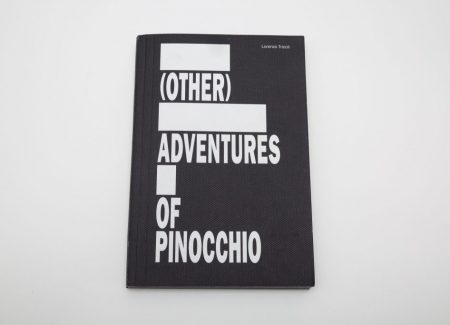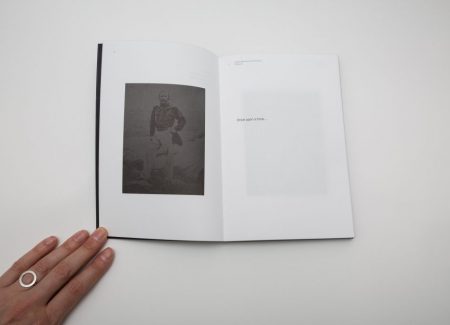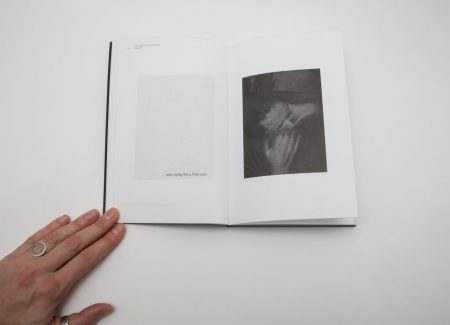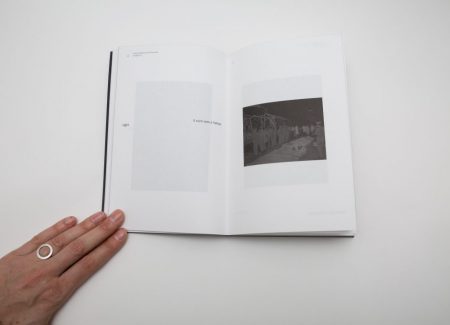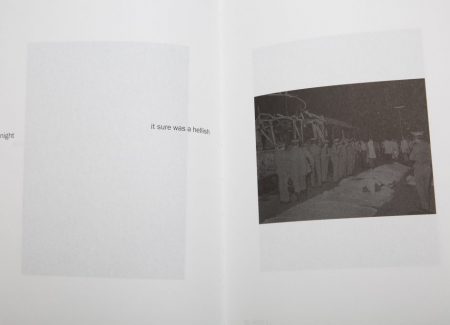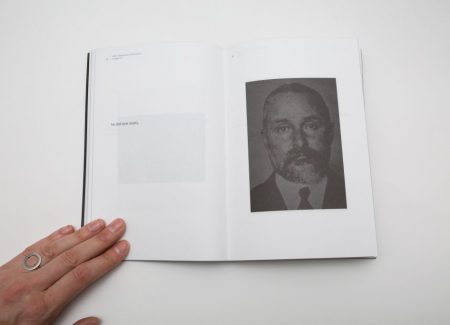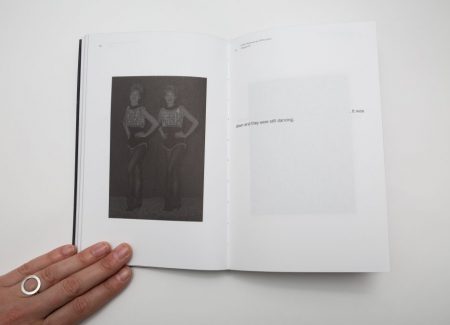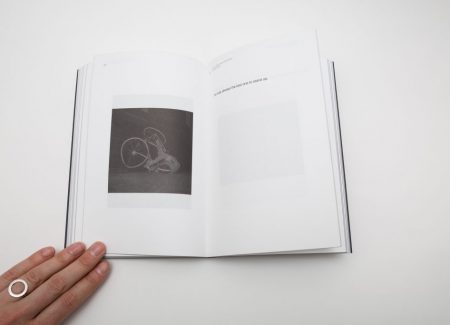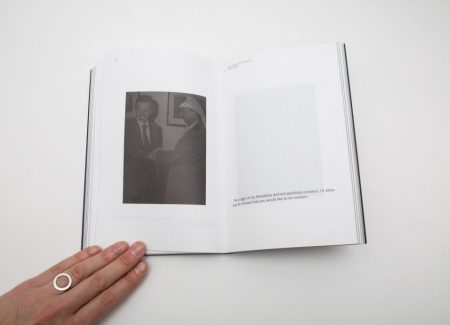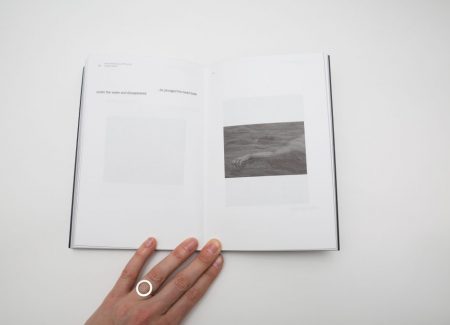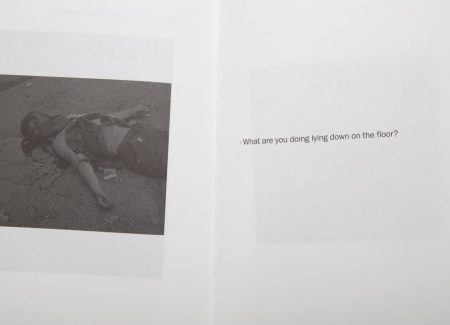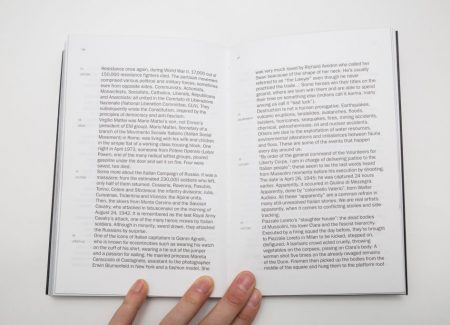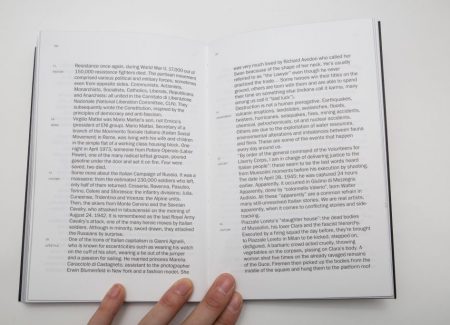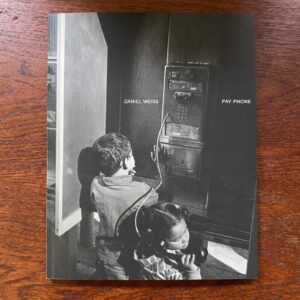JTF (just the facts): Published by Skinnerboox (Italian here)/d&books + blisterZine (English) in 2016 (here). Softcover, 260 pages with 87 black and white photographs. Includes Notes, Index of Names, Thematic Index and Dates. In an edition of 400 (English) and 300 (Italian) copies. (Cover and spread shots below.)
Comments/Context: When Lorenzo Tricoli, an artist and bookmaker, unexpectedly passed away in February, the photobook community lost a passionate member and a prominent bookmaker. His books, always smart and unique, have used humor and irony to talk about urgent issues in his native Italy. Tricoli’s book Bunga Bunga referenced Silvio Berlusconi’s infamous late night sex parties, exposing the more serious issues of corruption, social inequality and TV culture. (Other) Adventures of Pinocchio is Tricoli’s last photobook and it’s one of his best.
(Other) Adventures of Pinocchio offers a thoughtful critical history of 20th century Italy. The project is based on the popular children’s novel by the Italian author Carlo Collodi. The Adventures of Pinocchio tells the story of an animated marionette carved from a wood block, his mischievous adventures, and his now classic lie-extending nose. In Tricoli’s reworking of the story, extracts from the famous novel are matched with a selection of images sourced from the Internet, creating a new meta narrative – a satirical version of Italian history from Garibaldi to Berlusconi, with fanciful elements both surreal and conceptual.
The title of the book dominates the cover: one word appears in parentheses and blocks separate the words, hinting that Tricoli likes to play with typography and language. Each spread of the book contains text (part of a sentence or a few words) and an image, and this new juxtaposition shifts meanings and invites new interpretations. These pictures (newspaper clippings, magazine spreads, vintage prints, etc.) come from the vast image archive the artist collected over many years. The archive, known as The Archive You Deserve, focuses on social and political issues in Italy, as well as its secrets, scandals and tragic events.
All of the images were reworked and edited to follow the same aesthetic motif; they are black and white, and seem to have a silver coat. The notes and index at the end of the book provide the substantive context and detailed interpretation for each combination of text/image. They each correspond to the page number of an image and also indicate a theme: art & culture, crime, environment, history World War II, lifestyle, locations, news, politics, religion, sport and terrorism. The book requires rather an engaged participation, as its full potential comes through in its multiple links and connections. Its functional and neat design, along with its clear structure, create an exciting and smart photobook experience.
Tricoli builds multiple layers of Italian history as the pages turn. The narrative doesn’t appear in strict chronological order, but follows Collodi’s original text, with Tricoli reshuffling and interweaving dramatic political moments, stories of moral and political corruption, and Vatican scandals with the lightness of brilliant events from popular culture. (Other) Adventures of Pinocchio treats the text and images equally, using understated but elegant graphic design to tie all the elements together. Just as in the original text, the photobook book has 36 chapters; the text in a smaller font in the upper left corner of each page repeats the book’s title and indicates the chapter number.
The first spread contains a vintage photo of a bearded man, as he proudly stands in nature with his arm on the hip. “Once upon a time…” reads the text on the right. A quick flip to the notes tells us this is a reference to the Italian unification in 1861. The man in the photo is Giuseppe Garibaldi, the Italian general and politician.
The excerpts from the novel are placed in various parts of the page (perhaps following the text in the original layout), and the punctuation is also preserved. This choice helps to create a dynamic connection between the text and imagery. For example, the text “, he was always the last one to stand up,” is paired with a photo of a professional bicyclist (drawn from a road cycling race in Italy) captured in a moment of accident – he is upside down on the ground, still holding up his bike. He also used an example of the sport and the people’s obsession with its two main champions (Coppi and Bartali) to make a critical commentary: “In a country whose primary preoccupation was to forget about the fascist regime, their rivalry became legendary – a real metaphor for the political and social clash that divided people in postwar Italy, between Secularists and Catholics, Communists and Christian Democrats”.
An image of military personnel standing next to bodies wrapped in white clothes and a line reading “it was sure a hellish night” reference a massacre of priests and civilians during World War II, “the majority of the victims never had anything to do with fascism”. Similarly, a reference to the migrant crisis in Europe is represented by an image of an arm floating in the water and the following text, “, he plunged his head back under the water and disappeared”.
The success of (Other) Adventures of Pinocchio lies in its clever integration of concept and execution, bringing all of its visual and textual elements and allusions together in an original interwoven package. The photobook offers a creative and unexpected way to learn about Italian history and society, through a prism of satire, irony and love. “Our journey ends here, amid the greatness, ambiguities, miseries, beauty, surreality, flashes of genius, insolence, madness, moral corruption, eccentricity and the many contradictions and “chiaroscuros” of 20th century Italy. A large tableau where tragedy and comedy meet and intermingle. And blend.” While Tricoli couldn’t have predicted that these words would be among his last, they seem like a fitting tribute to an ingenious artist and bookmaker who sought to explore the multi-layered intersection between photography and Italian cultural life.
Collector’s POV: Since this is a collection of Internet-sourced images, there is of course no gallery or auction history for the material.
